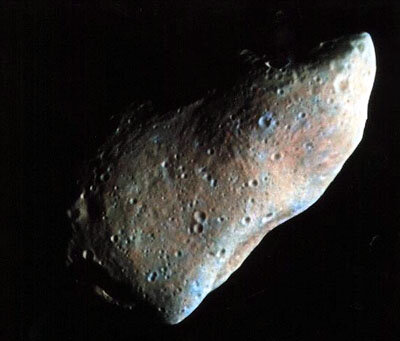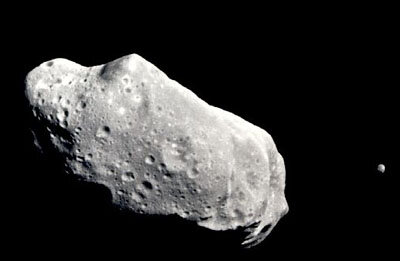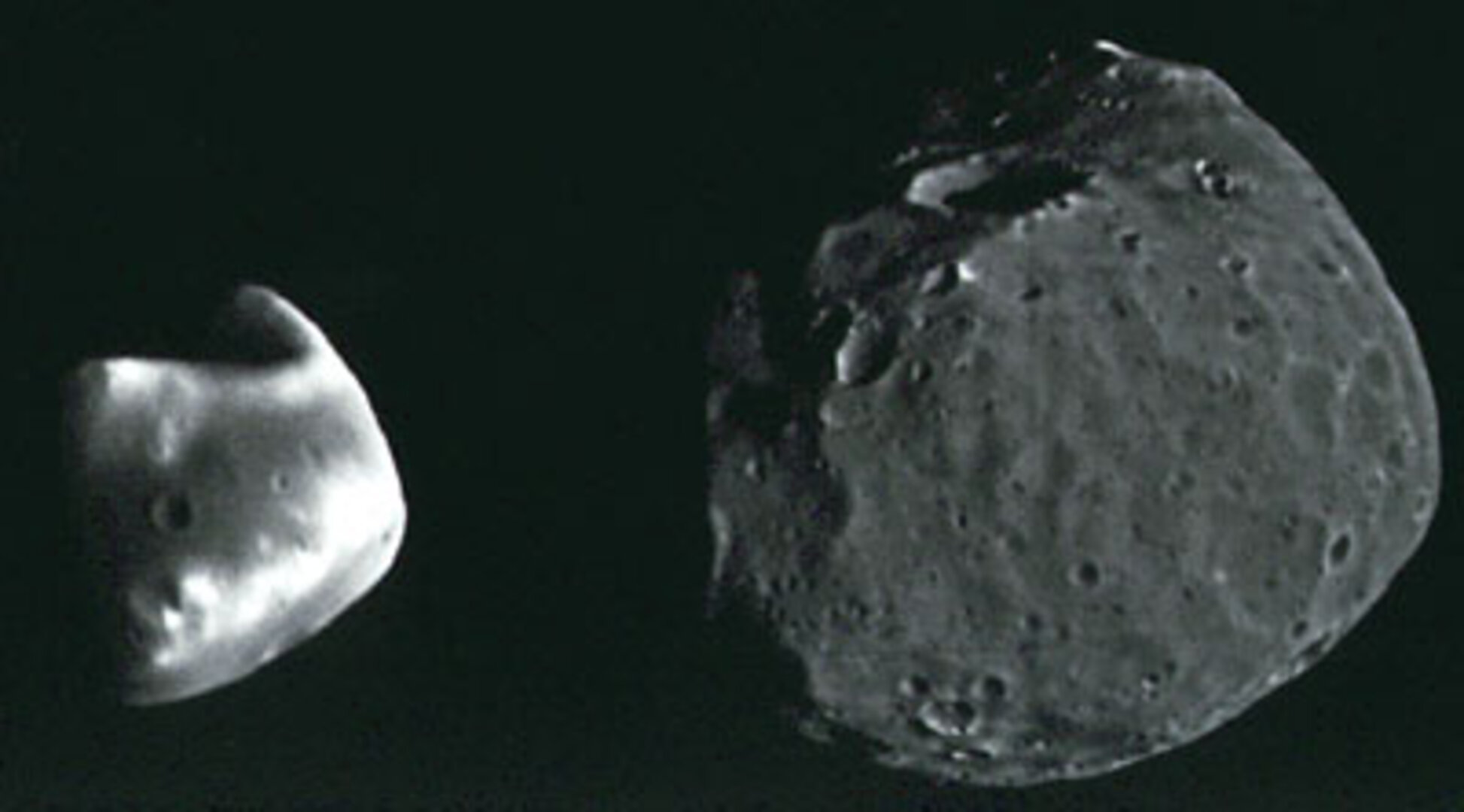Asteroids
Once, asteroids were dismissed as 'vermin of the skies' by astronomers, whose deep sky studies were often ruined by the unexpected appearance of one of these minor planets on a photographic plate. Today, the asteroids attract keen interest from a large section of the space science community - including mission planners.
Most of the asteroids orbit between Jupiter and Mars, where the giant planet's gravity prevents them from ever coalescing into a larger body. Even if they did it would be a small body as lumped together all the asteroid mass in the solar system amounts to less than the Earth's Moon. There are a few asteroids in the outer solar system between Saturn and Uranus and several asteroid groups with orbits that swing into the inner system.
So far, astronomers have found several hundred thousand asteroids and thousands more are plotted every year. A few of them truly merit the designation 'minor planet': Ceres, the biggest, is 933 km in diameter, and there are another 26 more than 200 km across. It is unlikely that there are any unknown asteroids in this size range; in fact, astronomers are confident that they have found 99% of those larger than 100 km.
For smaller bodies our information is much less complete. We have probably discovered no more than half of those between 10 and 100 km, and we have found very few of those that are smaller still. Astronomers estimate that their could be a million or more asteroids with a diameter of a kilometre or less.
Asteroids appear to come in three distinct 'flavours'. Most are very dark - as dark as charcoal - and carbon-rich. Very probably these carbonaceous asteroids are leftovers from the raw material that formed the solar system 4.7 billion years ago, and scientists would love to get their hands on a sample. Then there are the somewhat brighter stony asteroids, composed of nickel-iron and magnesium silicates. Finally there are asteroids made of almost pure nickel-iron, the rarest but brightest of all.

We really know very little about asteroids. They are too small and too distant for Earth-based telescopes to reveal any detail, and so far only three - Ida, Gaspra and Mathilde - have been encountered by passing space probes. In January 1999 NASA's NEAR spacecraft entered an orbit around asteroid 433 Eros. In February 2001 the NEAR probe actually touched down on Eros at the end of its mission.
ESA's Rosetta probe, en route to a rendezvous with Comet 67P/Churyumov-Gerasimenko in 2014, will add more to our slender asteroid database. The probe will encounter fly-by one or more asteroids. These encounters will be fleeting. But in the course of the 21st century, our knowledge could advance by huge strides: the asteroids are likely to feature in the Aurora Programme's long-term plans for the manned exploration of the solar system.
The scientific benefits alone would be immense. Our understanding of the early solar system would advance by leaps and bounds, while exobiologists and other life scientists are excited by the likely chemical storehouses to be found on carbonaceous asteroids. Advanced technology might even be able to process asteroid material into fuel, oxygen and water that would make long-duration missions partly self-sustaining. Nickel-iron asteroids could offer mineral resources of staggering richness - although before they can be exploited we may have to learn how to move these asteroids into more convenient orbits.

We may well have to learn how to move asteroids for more pressing reasons. There are probably between 500 and 1000 asteroids larger than one kilometre in Earth-crossing orbits; sooner or later, one of these will find itself on a collision course with our planet. Asteroid impacts have happened countless times since the Earth was formed and most scientists now agree that they have had a dramatic effect on the biosphere.
There is now a good deal of evidence for the theory that an asteroid impact was responsible for the extinction of the dinosaurs 65 million years ago, and other catastrophic collisions have almost certainly punctuated evolution. An asteroid around a kilometre across would not only ravage the impact site itself; the debris thrown into the atmosphere by the collision would dramatically disturb the climate. An 'impact winter' could last for many years, wiping out species wholesale.
Fortunately, the odds against such an impact are high, perhaps a million to one in any century. But the consequences are so devastating - civilization destroyed, nine-tenths of the human race killed - that some kind of insurance policy is highly desirable.
ESA is sponsoring Spaceguard, a worldwide asteroid tracking project that aims to plot the orbits of all asteroids on possible collision courses with the Earth; more than 300 have been logged so far. But the best defence against 'asteroid attack' is simply to learn more about asteroids. The knowledge will protect the Earth; it will also reveal much about the early solar system and offer rich opportunities for mineral exploitation. It seems like a good idea.




